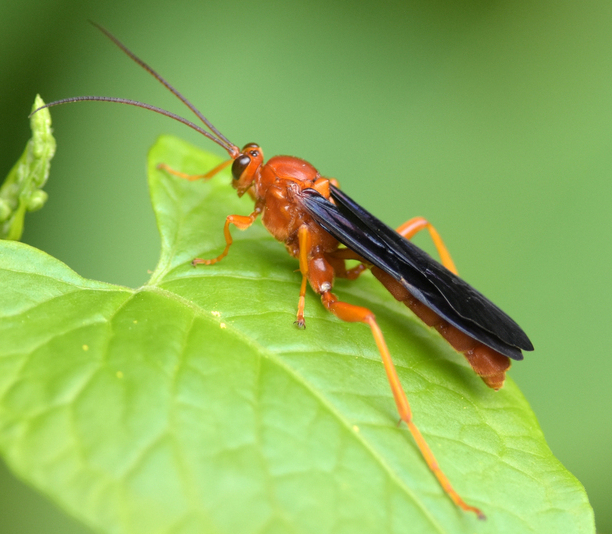Welcome
Ichneumonids are a fascinating group of parasitoid
wasps, with over 25,000
described species of an estimated total of 100,000.
In North America (north of Mexico), more than 5,000 species
have been described, with likely several thousand more awaiting
discovery. Like many hyperdiverse groups,
identification resources and other information about ichneumonids
are severely lacking relative to their diversity which hinders
further research. Beyond the many undescribed species, our knowledge of
their distributions, biology, behavior, ecology, and phenology
remains limited for nearly all ichneumonid taxa. It is therefore
crucial to accelerate research to better understand one of Earth's
most diverse family of organisms.
Ichneumonids of North America is an online resource dedicated to
synthesizing, organizin, and sharing knowledge about ichneumonid
biodiversity across North America. Created in 2022 by
Brandon Claridge, this ongoing project aims to
foster greater interest in ichneumonids among researchers and the general
public by providing accurate identification tools and access to
taxonomic information.
The website follows the principles of
an "e-monograph" or "e-flora/fauna" striving to be a comprehensive,
up-to-date, one-stop repository that leverages the interactiveity
and customization features of modern web technology. Due to time and
resource constraints, however, the project is currently
limited to the subfamily Ichneumoninae
and is far from its envisioned goal.
Guide
Visit the guide page to get started.
There you will find the main gallery for Ichneumoninae that features 299 specimens,
mostly comprising described species but also many undescribed species and even
a few putative new genera. The gallery
can be filtered by
chromatic and morphological characters, host use, distribution,
taxonomy and sex. All genera are represented in the gallery but only a minority of the species.
Additional information including a tribal key and
generic keys to Ichneumonini and Phaeogenini (still in development)
can be accessed via the tabs at the top of the page. Links to
generic pages are found on the side bar.
For identification to subfamily, please use the
subfamily classifier which will identify a specimen based on an image
of the frontal view of the head.

